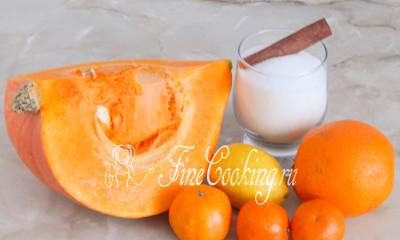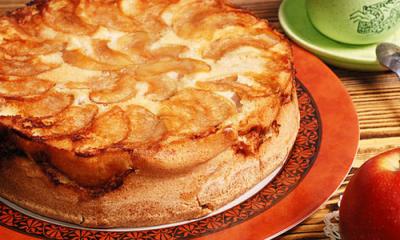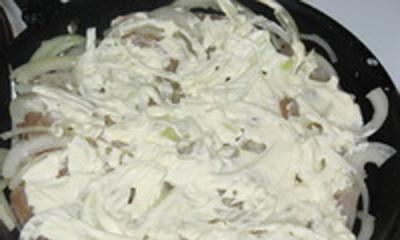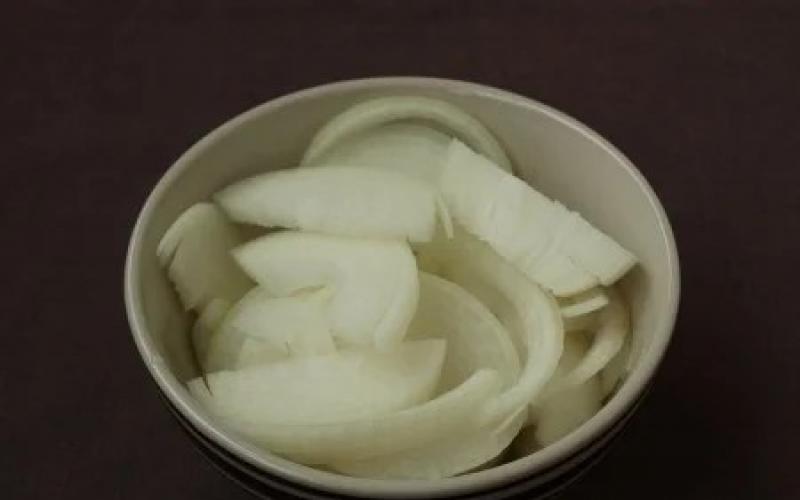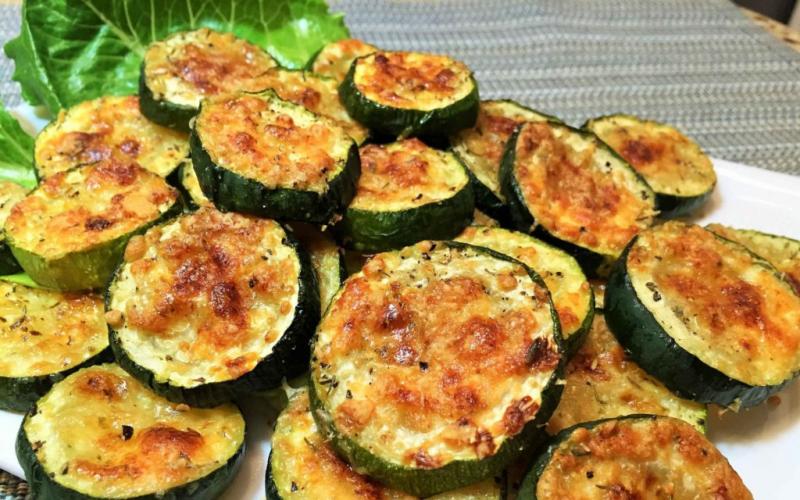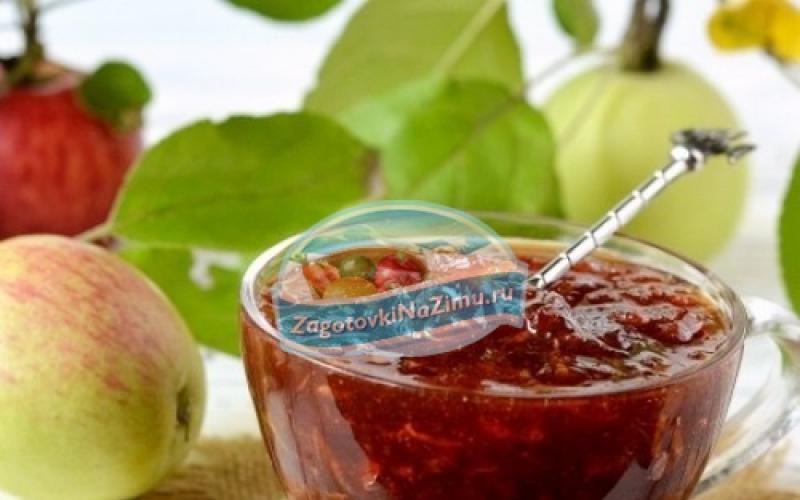Painting of Kievan Rus. The history of Russian painting actually begins with the era of Vladimir and Yaroslav, from which a number of wonderful mosaics and frescoes have come down to us. Now a little more about each of the types of painting of those times. Mosaic. Mosaic, a special kind of monumental painting, which is created from durable materials: small stones or pieces of opaque colored glass - smalt. The history of the existence of the mosaic has several millennia. The oldest mosaics were created from multi-colored clays; in Greco-Roman structures they were used for interior decoration, pebbles and various stones were used for them. The dominance of this art form. Fresco. Translated from Italian, the word "fresco" means "fresh", "raw". This is painting on a damp plastered wall with paints that are diluted with water. Drying, the lime is tightly connected to the paint layer. You can also write on dried lime plaster. Then it is moistened again, and the paints are pre-mixed with lime. They also loved the art of fresco in Russia. Artists painted the walls of cathedrals, temples, churches. The painting of the temple began only a year after its construction. This was done so that the walls would dry well. The painting was usually started in the spring and tried to be completed within one season. Iconography The process of creating an icon is complex. The board was skillfully chosen (most often from linden). Hot fish glue (prepared from bladders and cartilage of sturgeon fish) was applied to its surface, and a new canvas-pillowcase was tightly glued. On the pillowcase, in several steps, gesso (the basis for painting) was applied, prepared from crushed chalk, water and fish glue. Levkas was dried and polished. Old Russian icon painters used natural dyes - local soft clays and hard precious stones brought from the Urals, from India, Byzantium and other places. For the preparation of paints, the stones were ground into powder, a binder was added, most often the yolk, as well as gum (water-soluble resin of acacia, plums, cherries, cherry plums). Icon painters boiled drying oil from linseed or poppy oil, which was used to cover the painting of icons. A little about the types of artistic craft... Grain. Small gold or silver balls (from 0.4 mm in diameter), which are soldered onto the ornament in jewelry. The grain creates a spectacular texture, a play of light and shadow. Bead. Pendant earring. Scan. Scan (from other Russian skat - to twist), filigree - a type of jewelry technique: an openwork or soldered on a metal background pattern made of thin gold, silver or copper wire, smooth or twisted into ropes. Filigree products are often complemented with granulation (small silver or gold balls) and enamel. Partition enamel. Kolts with images of birds on the sides of the "tree of life" and a cassock chain made of plaques for attaching kolts. Gold. Partition enamel. 12th century The work was completed by: 10th grade student Nuyanzina M.
"Architecture of Ancient Russia" - Sofia. The cathedral was built by Russian masters under the guidance of architects from Byzantium. On the pillars supporting the dome are the images of the four evangelists. The magnificent interior of St. Sophia Cathedral has largely been preserved. This type of church is square in plan. Four domes around the main dome. ARTISTIC CULTURE OF Kyiv RUSSIA X-XI centuries.
"Life of Ancient Russia" - Russian huts were of two types: chicken (or black) and white. After plowing, the field was harrowed. The peasant lived not only by working on the land. The cow was the main breadwinner in the peasant economy, and the horse was the main worker. Forest river plain. But the walls were not the main defender of Russian settlements. A palisade wall was always built around the village.
"Rus IX century" - Peoples-? Remember: Genealogy of Russian princes. Tribal unions. Lesson objectives: Civilization is a stage in the development of society, following the primitive society. State tasks: establishing order in the Russian land; strengthening of princely power. Cities. Points of view. Public strata -. State -.
"Yaroslav" - filled with water, with swing bridges that led to the gates of the city. Svyatopolk. Coins jingled at the auction different countries. Trade. Only in 1046, under a peace treaty, were the Russian prisoners returned. The presentation was made by Anastasia Petrieva, a 10th grade student of Gymnasium No. 22. Church. There was a deep ditch in front of the wall,
"Painting of Ancient Russia" - Andrey Rublev. 1410. Our Lady of Three Hands. Iconostasis - icons gathered in rows - ranks - that cover the altar. Find the definition of an icon. All icons depicting the good shepherd belong to the early Middle Ages. Frescoes by Theophanes the Greek. Icons depicting selected saints are especially popular.
"Prince Vladimir" - Vladimir was the sole ruler of the Russian land. Prince Vladimir. Project topics: Baptism of Russia. The bell rang and we started the lesson. Dielupo Lords of the rouki. Vladimir Svyatoslavich is the youngest son of Prince Svyatoslav and the housekeeper Princess Olga Malusha.
There are 39 presentations in total in the topic
slide 1
Painting Ancient Russia
Literature lesson in grade 9

slide 2
Lesson Objectives:
Get acquainted with the masterpieces of ancient Russian painting and architecture Learn about the genres of art Learn the names of famous ancient Russian icon painters

slide 5
Mosaic is a monumental painting using multi-colored pieces of mica. Byzantine churches and ancient Russian churches, for example, Sophia Cathedral in Kyiv, were decorated with mosaic panels. In the altar part of the temple, a mosaic of the 11th century "Our Lady" has been preserved. In connection with the raids of nomads, this art was lost.
Interior of Kyiv Sofia
Mosaic of the Altar of Kyiv Sofia

slide 6
Peter of Alexandria. Fresco of the Church of the Savior on Nereditsa in Novgorod. 1199
Painting with vegetable paints on wet plaster

Slide 7
Easel painting, performed on boards with egg paints. Icon painting was nowhere as popular as in Russia.

Slide 8

Slide 9
Our Lady of Oranta (Omen)
Especially in Russia they loved to portray the Mother of God. There were different types of images: Oranta, Tenderness, Hodegetria, Three-Handed and Panagia

Slide 10
Our Lady of the Sign of Tsarskoye Selo
The Sign, or Oranta, was depicted to the waist, with her arms spread apart. Jesus was depicted in the center of the icon.

slide 11
Hodegetria Sinai
The Hodegetria was also depicted waist-deep. She holds a baby in her arms and points to him with her hand.

slide 12

Slide 14

slide 15

slide 16

Slide 17
Savior Not Made by Hands
This is the oldest of the canonical images. According to legend, the first image of Christ miraculously imprinted on the board, brought to his face. This board had miraculous power - it healed the king of the city of Edessa Avgar from leprosy. Thus, the creator of the first icon was Christ himself. Initially, the Holy Plat was kept in Edessa until 944, then it was transferred to Constantinople.
Simon Ushakov

Slide 18
good shepherd
The second oldest image of Christ, rooted in ancient painting, is the Good Shepherd. The Gospel of John says: "I am the good shepherd, the good shepherd lays down his life for the sheep." All icons depicting the good shepherd belong to the early Middle Ages. In later periods, the image of the Good Shepherd is rare.

Slide 19
Christ Emmanuel
Many touching images were created within this canon. Emmanuel ("God with you") - Christ in infancy. The Scripture says: “And they will call his name Emmanuel.” The Little Christ is usually depicted with a scroll in his hand. The scroll emphasizes that it was the one about whom the Old Testament prophets spoke. AT this case Christ is depicted with an open Gospel in his hand - as the Judge at the Last Judgment.

Slide 20
Christ - Pantokrator
The largest number of icons, frescoes and mosaics were created within the framework of this canon. The serious, stern Pantocrator (“Almighty”) seems to survey the earth from heaven, saying: “I am Alpha and Omega, who was, who is and who will be, Almighty.” His eyes seem to look not only at you, but also through you, calling through his eyes to look at heaven. According to the canon, in the left hand of Christ is a closed Gospel, the fingers of the right hand are folded in such a way that they form the Greek characters “IC XC” (index and middle fingers up.) Usually Christ's outer garment (himation) was depicted in blue - this is a symbol of the human incarnation of Christ; and the shirt (tunic) - red, sometimes purple - is a symbol of the divine essence of Christ.

slide 21
Savior on the Throne
The Savior on the Throne is a kind of Pantokrator, an image of the King of Heavenly Jerusalem. Christ in royal robes sits on a throne with an open Gospel in his hand - a symbol of the Last Judgment. According to this canon, Christ is depicted wearing a robe of glittering gold or scarlet, often adorned with crosses. A crown (mitre) is often depicted on the head. The background of the icon is usually golden. This icon was painted by Simon Ushakov. Christ is holding the open Gospel of Matthew, and the following words can be read: “Come, you whom my Father has blessed… For when I was hungry, you gave me food; I was thirsty and you gave me wine to drink; I was a wanderer and you gave me shelter; I was undressed, and you gave me clothes ... "

slide 22
Saved in the Force. Andrei Rublev. 1410
A special type of the Savior on the Throne - the Savior in the Powers - has found distribution mainly in Russian icon painting. Christ, surrounded by angelic forces, also sits on the throne. In the background, Russian icon painters depicted a rhombus or quadrangle of intense red color superimposed on each other (a symbol of glory) and a blue-green oval.

slide 23
Spas the Bright Eye - an icon of the middle of the 14th century
In Russian icon painting of the Golden Horde period, Spas the Bright Eye was very popular. This face is, as it were, a reference to the words of Scripture: "I did not bring you peace, but a sword." This is a shoulder-length image of Christ with a mournful face and furious eyes. This icon is from the Assumption Cathedral, which was painted by Greek masters. Here you can see the energetic light and shade and color modeling of volumes. Artists are trying to depict the vigor of the saint.

slide 24
Theophanes the Greek. Christ Almighty
Theophanes the Greek seeks to convey the saint at the moment of a religious feat or ecstasy. His work is characterized by expression, inner strength.

Slide 25
Frescoes by Theophanes the Greek
The frescoes of Theophanes the Greek are easily recognizable by the pastel colors and white highlights that are used in depicting the hair of the saints and the drapery of their clothes. The lines are quite sharp.

slide 26

Slide 27
Saints Boris and Gleb. Theophanes the Greek. Hagiographic icon from Kolomna.
Icons depicting selected saints are especially popular. Nicholas the Wonderworker, Saints Boris and Gleb were especially revered in Russia.

Slide 28
Theophanes the Greek "Transfiguration" Icon from Pereyaslavl-Zalessky
The miraculous manifestation of the divine nature of Christ, stunning the apostles and overthrowing them to the ground, is embodied with amazing energy. Excitement and drama are combined with compositional dynamics.

"Old Russian icon painters with amazing clarity and power embodied in images and colors what filled their souls - a vision of a different truth of life and a different meaning of the world." from an article in Trubetskoy "Speculation in Colors" How do you see the difference between religious and secular painting?
"ICON" - (gr. - eikon) - an image. The task of religious painting is to embody the word in the images of the Christian dogma. All types of painting techniques: mosaic, fresco, miniature, icon painting in religious painting are subordinated to a single goal - the disclosure of Christian truths. An icon is a sacred object that acts as an intermediary between man and God.

TECHNOLOGICAL SEQUENCE OF WORK ON ICONS Icons were painted on boards connected with dowels (bars). The boards were dried and covered with gesso (a mixture of glue and chalk). The drawing was translated. The background and the crowns of the saints were gilded. They painted vestments (clothes) and a landscape - “dolitsky writing”. They painted faces and exposed parts of the body - a “personal letter”. Icons were painted in tempera, a pigment (colored clays, minerals) mixed with eggs or casein (milk whey). The finished icon was covered with drying oil ( vegetable oil). Icons were painted according to the principle of reverse perspective, that is, the vanishing point of all objects was on the praying person standing in front of the icon. The "reverse" perspective is characterized by the combination of several points of view on the object, enclosed in a common space. In the "reverse" perspective - unlike the "direct" one - what is behind remains the same size, and most often increases. Objects, as it were, turn towards us with different faces, and the viewer feels himself simultaneously seeing from above, below and from different sides.



According to legend, the first icon was Ubrus - a towel on which the face of Christ was imprinted - the Savior Not Made by Hands. In Russia, icons were treated with reverence. They didn’t buy and didn’t sell from them - they just bartered them. They could not be thrown away or burned. Old icons were buried in the ground or floated down the river. Icons were the first to be rescued from fires and redeemed from captivity. Getting rid of misfortunes was associated primarily with the miraculous effect of icons.


1. Savior Not Made by Hands. Icon. Novgorod. 12th century one of the main types of the image of Christ, representing His face on the obrus. Christ is depicted at the age of the Last Supper. In Russia there was a special kind miraculous image“Savior of the Wet Brad” is an image in which the beard of Christ converges into one thin tip.

2. Saved the Almighty (Pantokrator). Mosaic in the Cathedral of St. Sophia in Constantinople. 12th century Mosaic of the Almighty or Pantocrator (Greek παντοκρατωρ all-powerful) is an image in the iconography of Christ, representing Him as the Heavenly King and Judge. Greek. The Savior can be depicted full-length, sitting on a throne, waist-deep. In the left hand is a scroll or the Gospel, the right is usually in a gesture of blessing.

3. Saved in strength. Christ is the judge. The red square is the earth, the blue oval is the spiritual world, the red rhombus is the invisible world. Icon from the Deesis tier of the iconostasis of the Annunciation Cathedral of the Moscow Kremlin. Theophanes the Greek (?). The end of the XIV century Theophanes the Greek 4. Savior Emmanuel. Simon Ushakov Simon Ushakov The Savior in Strength, the central icon in the traditional Russian iconostasis. Christ sits on a throne surrounded by an angelic host of "Heavenly Powers". The angelic Savior Emmanuel, Emmanuel is an iconographic type representing Christ in adolescence, often with a book in his hand.

5. Bishop the Great. Icon. End of the 17th century the image of Christ in the image of the New Testament high priest, sacrificing himself. 6. Do not cry to Me, Mati. Icon. End of the 18th - first quarter of the 19th century iconographic composition representing Christ in the tomb 8. Good Silence. Icon. Ivan Dyakonov (?). 17th century Image of Christ before coming to people (incarnation) in the form of a winged youth with an eight-pointed halo. halo 7. Good Shepherd. Icon. Greece. 20th century The Savior is depicted as a shepherd surrounded by sheep, or with a lost sheep behind his shoulders.


Iconographic type of Orant. Or "Sign" Oranta Icon Great Panagia. Yaroslavl. Around 1218, Oranta (from Latin orans praying) is one of the main types of images of the Mother of God, representing Her with her arms raised and outstretched to the sides, palms open, that is, in the traditional gesture of intercessory prayer.

2. Eleusa (Greek Ελεούσα merciful from έλεος compassion, sympathy), Tenderness is one of the main types of depiction of the Mother of God in Russian icon painting. The Mother of God is depicted with the Christ Child sitting on Her arm and pressing her cheek against Her cheek. On the icons of the Theotokos Eleusa, there is no distance between Mary (the symbol and ideal of the human race) and God the Son, their love is boundless. The icon represents the cross sacrifice of Christ the Savior as the highest expression of God's love for people. Theophanes the Greek 1392 State Tretyakov Gallery Theophanes the Greek Icon of Vladimir Vladimir Icon of the Mother of God. Byzantium. 12th century

3. Hodegetria (Greek Οδηγητρια Pointing the Way), Guide is one of the most common types of images of the Mother of God with the Child. The lad-Christ sits in the arms of the Virgin, right hand He blesses, and with his left hand he holds a scroll of Greek. Mother of God Christ of Smolensk Hodegetria Hodegetria from the Museum. Andrey Rublev





ANDREY RUBLEV () The founder of the Moscow art school. He spent his youth in the Trinity-Sergius Lavra, was a monk. He lived in the Andronikov Monastery, was buried there. He painted frescoes and an iconostasis for the Annunciation Church of the Moscow Kremlin. (everything perished) 1408 - repainted the Assumption Cathedral in Vladimir ("The Last Judgment", dome, vaults) and the iconostasis for the cathedral. Three icons from the Deesis tier were found in Zvenigorod. Shortly before his death, he painted the Trinity Cathedral Trinity-Sergius monastery (not preserved), but the icon "Trinity" has been preserved. Ranked among the saints. Saved from the Zvenigorod rank.

Style features: - Smooth, calm rhythm of lines, - rounded, continuous lines, - favorite paint - "stuffed cabbage" blue-blue azure, - Inner wisdom, beauty of images - Expressive gestures of the icon of the Zvenigorod rank: Archangel Michael, Apostle Paul ICONOGRAPHICAL SYMBOLS Mountain - spiritual ascent Tree - the tree of life, eternal life Chambers - new construction, a symbol of a harmonious structure Chalice - a sign of fate and sacrifice Circle - the unity of the Holy Trinity. Andrey Rublev g - the most perfect icon in the history of ancient Russian painting.

Dionysius. Archangel. Fragment of a fresco of the Church of the Nativity of the Virgin of the Ferapontov Monastery DIONISY (c) - was not a monk; - wrote 87 images for the Joseph-Volokolamsk monastery (not preserved). - in 1482 he painted icons for the Assumption Cathedral of the Moscow Kremlin. Style features: -Elongated proportions of figures, - bright colors frescoes, - mostly light delicate colors in icons, - light, as if floating in the sky, weightless images, - musicality, elegance

Description of the presentation on individual slides:
1 slide
Description of the slide:
Painting of Ancient Russia What an amazing thing is the art of a painter! He is a miracle worker greater than nature itself... the art of the painter turned fiction into real life. Christopher of Mytilene (1000-1050)
2 slide
Description of the slide:
Ancient Russia... With these two words, the idea of the historical life of our Fatherland begins. In 988 under Vladimir the Holy Russia was baptized, which became the most important milestone in its future destiny.
3 slide
Description of the slide:
Russia adopted a new religion, which for many centuries will become the main worldview of society, will cover all spheres of life, introduce it to other Christian countries, give writing, without which the true development and prosperity of the 11th-12th centuries formed by the 11th-12th centuries is inconceivable. ancient Russian state.
4 slide
Description of the slide:
The development of the culture of the Old Russian state for a long time directly depended on Byzantine traditions. So, after the adoption of Christianity in the state, new genres of monumental painting, such as fresco and mosaic, began to arrive from Byzantium. Ancient easel painting or icon painting has also become no less common. In addition, Russian masters adopted iconographic canons from Byzantium, the immutability of which was strictly guarded by the ministers of the church. This influenced a more stable and lasting Byzantine influence on the development of painting in ancient Russia.
5 slide
Description of the slide:
"Features of Old Russian Painting". Canonicality. Deep connection with the temple. Religious images and plots. Deformation in the image of figures and objects; immobility (static); conventionality of gestures Reverse perspective. The main thing for the artist is to convey the spiritual inner life. Hence the close interest in the face and eyes. The semantic center is MAN, his healing, salvation, purification, transformation. Painting is saturated with religious meanings - a halo, a dove, a cross, etc. Any object is a bearer of a certain semantic meaning.
6 slide
Description of the slide:
The symbolism of color (color contained an allegorical meaning). Red is a symbol of life, "life-giving warmth"; white - purity, innocence, purity; golden (yellow) - divine color, frozen sunlight; green - youth, flowering, rebirth, hope; blue - eternity, divine truth, the Holy Spirit; black is a sign of sorrow, suffering, death and mourning, a sign of atonement for sins. Combination of time: 2-3 events and more were depicted on one icon. For example, life icons.
7 slide
Description of the slide:
The Russian masters adopted the system of painting temples from the Byzantines, but folk art also influenced ancient Russian painting. The earliest surviving masterpieces of ancient Russian painting were painted on the territory of Kyiv. The first temples, according to the chronicles, were decorated by visiting Greek masters, who diversified the already established iconographic tradition with new principles for arranging plots in the temple interior, as well as with a unique manner of planar painting.
8 slide
Description of the slide:
The frescoes and mosaics of St. Sophia Cathedral, made in a solemn and strict manner, characteristic of monumental Byzantine ancient painting, are famous for their special beauty. Each image is imbued with the idea of greatness, the inviolability of earthly power and the Orthodox Church.
9 slide
Description of the slide:
Russia was baptized by Byzantium and together with it inherited the idea that the task of painting is to “embodie the word”, to embody the Christian dogma in images. Therefore, the basis of ancient Russian painting is the great Christian “word”. Therefore, this painting, like the architecture of Russia, was considered a "book for the illiterate."
10 slide
Description of the slide:
In the XI century. many works of easel painting were created - icons - (from Greek - image, image). The Kiev-Pechersk collections of monks' biographies even preserved the name of the famous Russian icon painter of that time, the Caves monk Alimpiy, who studied with Greek masters and "painted icons cunningly without effort."
11 slide
Description of the slide:
The icon began to be regarded as a visible symbol of the invisible world, as "an image of secret and supernatural spectacles." According to legend, the oldest Christian icons appeared either miraculously(“The Savior Not Made by Hands”), or were painted from nature (the image of the Mother of God by the Evangelist Luke, the image of the first Christian saints by artists who personally knew and remembered their appearance).
12 slide
Description of the slide:
Mosaic "shimmering painting" is a monumental painting using multi-colored pieces of mica. Byzantine churches and ancient Russian churches, for example, Sophia Cathedral in Kyiv, were decorated with mosaic panels. In the altar part of the temple, a mosaic of the 11th century "Our Lady" has been preserved. In connection with the raids of nomads, this art was lost.
13 slide
Description of the slide:
Frescoes Painting with vegetable paints on wet plaster Peter of Alexandria. Fresco of the Church of the Savior on Nereditsa in Novgorod. 1199
14 slide
Description of the slide:
Easel painting, performed on boards with egg paints. Icon painting was nowhere as popular as in Russia. Icons
15 slide
Description of the slide:
Especially in Russia they loved to portray the Mother of God. There were different types of images: Oranta, Tenderness, Hodegetria, Three-Handed and Panagia Our Lady of Oranta (Sign)
16 slide
Description of the slide:
This is the oldest of the canonical images. According to legend, the first image of Christ miraculously imprinted on the board, brought to his face. This board had miraculous power - it healed the king of the city of Edessa Avgar from leprosy. Thus, the creator of the first icon was Christ himself. Initially, the Holy Plat was kept in Edessa until 944, then it was transferred to Constantinople. Savior Not Made by Hands
17 slide
Description of the slide:
The second oldest image of Christ, rooted in ancient painting, is the Good Shepherd. The Gospel of John says: "I am the good shepherd, the good shepherd lays down his life for the sheep." All icons depicting the good shepherd belong to the early Middle Ages. In later periods, the image of the Good Shepherd is rare. good shepherd
18 slide
Description of the slide:
The Savior on the Throne is a kind of Pantokrator, an image of the King of Heavenly Jerusalem. Christ in royal robes sits on a throne with an open Gospel in his hand - a symbol of the Last Judgment. According to this canon, Christ is depicted wearing a robe of glittering gold or scarlet, often adorned with crosses. A crown (mitre) is often depicted on the head. The background of the icon is usually golden. This icon was painted by Simon Ushakov. Christ is holding the open Gospel of Matthew, and the following words can be read: “Come, you whom my Father has blessed… For when I was hungry, you gave me food; I was thirsty and you gave me wine to drink; I was a wanderer and you gave me shelter; I was undressed, and you gave me clothes ... "The Savior on the Throne
19 slide


